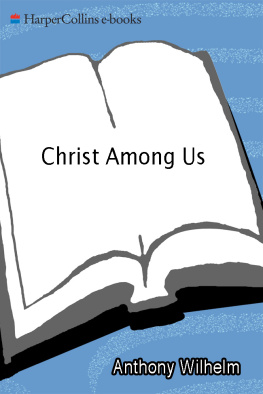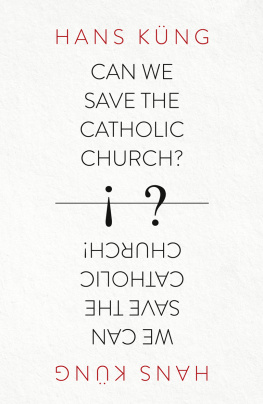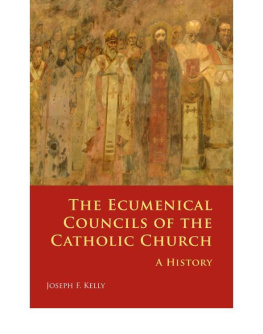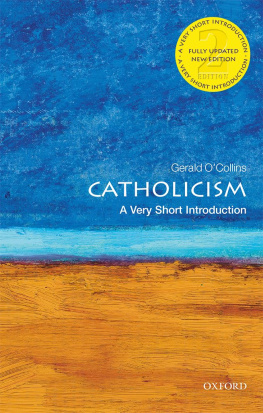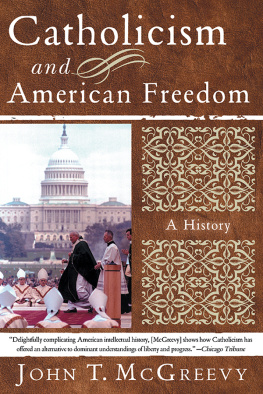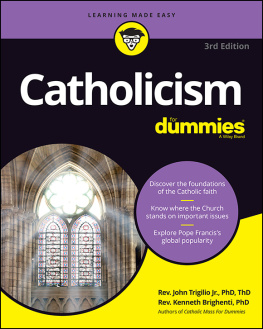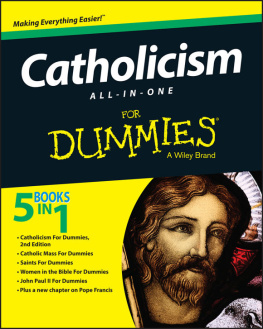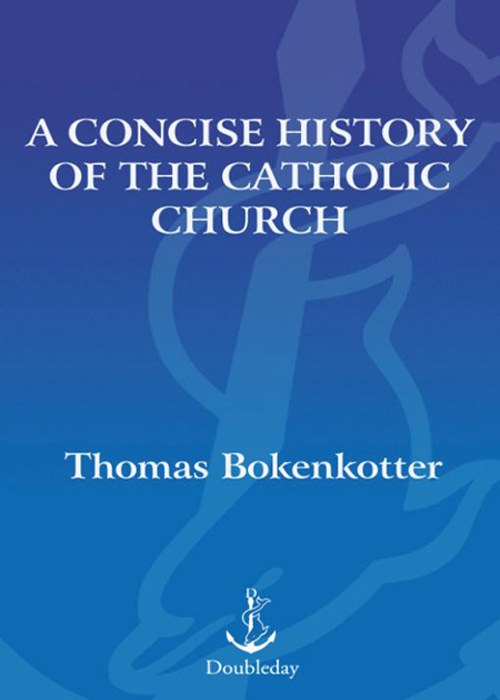
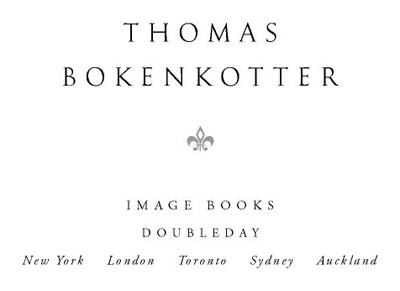
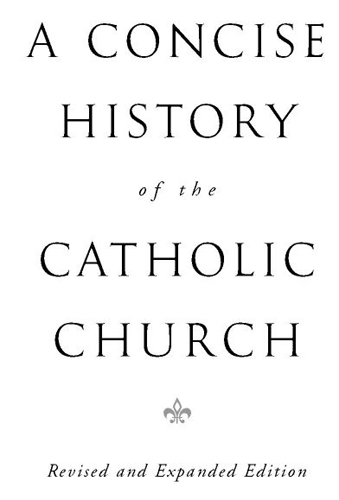
Table of Contents
To
my dear mother
and father

PREFACE TO THE IMAGE EDITION
The publication of a revised paperback edition of my Concise History gives me an opportunity to say a few things about my approach in writing this general history of the Church. My object was to provide for the general reader a brief compendium of the main facts of the Churchs history, i.e., an account of the main events, personalities, and movements that have made the Church of Rome what it is today. To do this in one relatively short volume is indeed a challenging task, and by sheer limitation of space I felt compelled to focus my attention almost exclusively on the Churches united with Rome. In doing so I certainly did not intend to pass judgment on the claims of the other Churches to be part of the one, holy, catholic, and apostolic Church of the Apostles Creed. The same is true in my use of the term Catholic, which I employ as the ordinary popular designation for the Churches united with Rome.
In spite of all my efforts I realize the book has its share of short-comings and omissions, which are perhaps inevitable in a book of this scope. Some critics, for instance, have noted, with a certain amount of justice perhaps, a tendency to glide over the negative and dark aspects of the Churchs history. Others would like to see more attention given to the activities of the ordinary Catholic as opposed to the doings of Popes, bishops, and councils. I can only say that after writing this book I am more aware than ever of how difficult it is to produce a balanced account of the complex concatenation of events, ideas, and personalities that constitute historical reality. And I can only hope that this book with all its imperfections will provide the reader with some insight into the Churchs fascinating and incredibly complicated past.
In conclusion, I want to add some words of thanks to those who have helped me improve this revised edition of my book by their constructive criticism and suggestions. In particular, I wish to thank Monsignor John Tracy Ellis of the Catholic University of Washington, Reverend John Jay Hughes, Professor Adjunct of St. Louis University, Reverend Robert McNamara, Professor of Church History at St. Bernards Seminary in Rochester, and Reverend M. Edmund Hussey, Professor of Historical Theology at Mount St. Marys Seminary in Norwood, Ohio.
Thomas Bokenkotter
St. Gregorys Seminary
Cincinnati, Ohio
1978
PREFACE TO THE REVISED AND EXPANDED EDITION
My intention in writing A Concise History was to provide the ordinary Catholic and others with a relatively brief account of the Catholic Churchs tumultuous history. I especially hoped it would help Catholics cope with all the changes going on in the Church by showing them how much change had occurred in the past.
I have tried in this revised and expanded edition to bring it up to date by covering the major events of the Churchs last fifteen years, years of extraordinary drama, years that saw the crisis engendered by Vatican II continue unabated as the Church sought to incorporate the new insights of the Council into its life and thought: collegiality, ecumenism, religious freedom, theological and cultural pluralism, a personalist approach to moral issues, dialogue, use of biblical and historical criticism. Just how they could be fitted into the ancient, rock-ribbed structure of Catholic doctrine and tradition was not, and could not, be spelled out in the few short years of the Council. It is no wonder that much fur started flying when the work began of reconciling these concepts with the tradition, especially as defined so rigidly by the Council of Trent.
One thing sorely lacking in the previous editions of this history has been a bibliography to help the student with a desire for further reading. I hope I have supplied this lack by the extensive bibliography I have provided. The books were selected on the basis of their scholarly value and their accessibility for the average reader.
Special thanks to Pat Kossmann, my editor, who has been so helpful in many ways over the many years we have worked together.
Thomas Bokenkotter
Assumption Church
Walnut Hills, Cincinnati, Ohio
1990
PREFACE TO THE THIRD EDITION
It was good news indeed when Trace Murphy, my editor, informed me that Doubleday and Image Books planned to issue an illustrated edition of the Concise History. Intended to mark the twenty-fifth anniversary of its publication, the project raised my hopes that the book may outlive its authoran abiding vanity of authors.
My intent was, and is, to provide a guide for Catholics who wanted to know more about the complex history of their two-thousand-year-old Church. And also to provide some perspective for those confused by all the changes brought on by the Second Vatican Council. In other words, to show how change has been a constant in the history of the Church. In doing so I have focused on the main events and personalities that have made the Roman Catholic Church what it is today.
There is no need to dwell on the obvious limitations inherent in this type of book. To try and condense two millennia of history into one volume means that much of even real importance will be left out. My hope is that the updated bibliography will help to fill in the gaps.
The crisis engendered by Vatican II still continues as the Church seeks to incorporate the new insights of the Council into its life and thought: collegiality, ecumenism, religious freedom, theological and cultural pluralism, a pluralist approach to moral issues, dialogue, and use of biblical and historical criticism. As I said in the Preface to the previous edition, just how these new insights could be fitted into the ancient, rock-ribbed structure of Catholic doctrine and tradition was not, and could not, be spelled out in the few short years of the Second Vatican Council. It is no wonder that fur is still flying as the work continues of reconciling new insights with the ancient traditions, especially as defined so rigidly by the Council of Trent.
I might add that I am most grateful to the critics who have been generous toward this book in spite of its many limitations.
My special thanks to the staff at DoubledayTrace, Siobhan, and Andrewfor their diligence in seeing this illustrated edition through the press.
INTRODUCTION
The Catholic Church is the oldest institution in the Western world. It can trace its history back almost two thousand years. It began in Jerusalem as a small nucleus of disciples who shared faith in the resurrection of Jesus, their crucified leader, and it spread quickly to countless cities of the Roman Empire. Its inflexible opposition to Roman culture, morals, and religion aroused the savage fury of the state, and many of the Churchs members perished when they refused to conform. But its spiritual power was only magnified by persecution, and its progress remained constant. Finally it won a decisive victory over the old paganism when it drew to its side the Emperor Constantine himself, who in 312 attached its emblemthe monogram of Christto the banners of his troops and granted it complete religious liberty.
Next page

